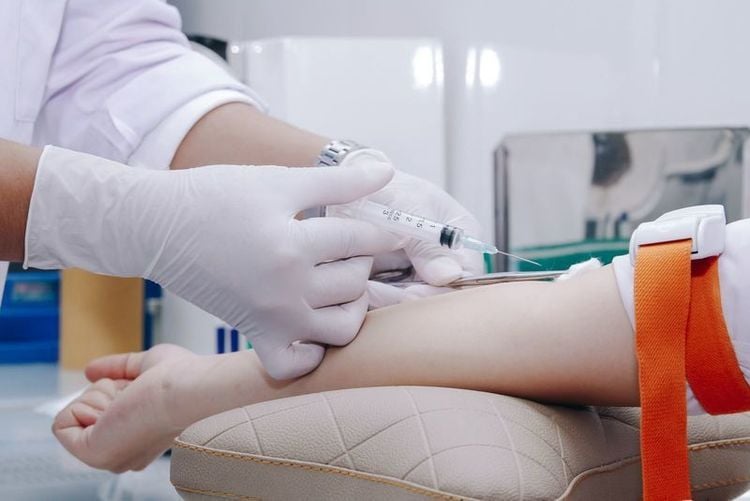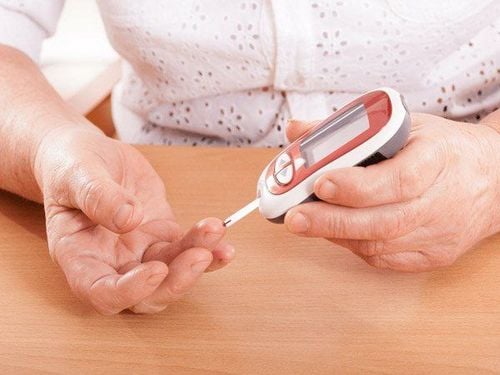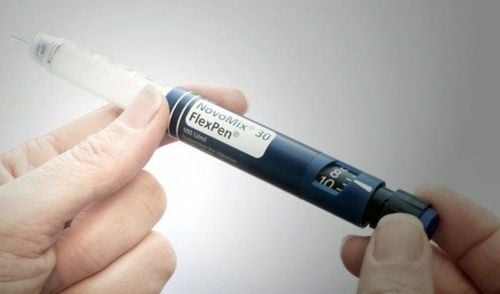This is an automatically translated article.
1. What is the Glucose Tolerance Test (OGTT)?
The oral glucose tolerance test (OGTT) is a test that measures the body's ability to tolerate glucose. The OGTT test is a diagnostic test for prediabetes and diabetes, and the glucose tolerance test for pregnant women is a valuable test for diagnosing gestational diabetes in women during pregnancy. pregnant.2. Why perform a glucose tolerance test (OGTT)
Glucose tolerance test has many different purposes including:
2.1 Diagnosis of gestational diabetes in pregnant women Glucose tolerance test should be screened at 24 to 28 weeks of pregnancy. Glucose tolerance testing is essential for all pregnant women because of the serious consequences of gestational diabetes. These include:
Complications from the mother's side:
Gestational diabetes causes polyhydramnios because the baby urinates a lot, causing the uterus to enlarge rapidly, which can cause respiratory and circulatory dysfunction, affecting the mother's health and little. Increased risk of miscarriage, premature birth; Increased risk of gestational hypertension, preeclampsia, eclampsia 4 times compared to pregnant women without the disease; Immunodeficiency easily causes infections; Prolonged labor, difficult delivery, large fetus increase the risk of trauma and postpartum hemorrhage; Severe disturbances in blood sugar can lead to coma due to hyperglycemia...; The mother is overweight, causing obesity.

Đái tháo đường thai kỳ gây ra tình trạng béo phì ở mẹ bầu
Complications from the fetus, newborn after birth from a diabetic mother
Increased risk of fetal malformations if the mother has diabetes before pregnancy and is not treated properly. The baby has an abnormal weight (too big, or too small). If the fetus is large, it can lead to difficult birth, causing birth trauma such as shoulder dislocation, broken collarbone, increasing the risk of cesarean section because the baby is too big. Increased perinatal mortality by 2–5 times. Stillbirth due to high blood sugar. Newborns are susceptible to respiratory failure due to delayed lung maturation when insulin resistance is increased. Newborns are prone to hypoglycemia, hypocalcemia, severe jaundice, and possibly coma. When they grow up, they are more susceptible to diseases. such as obesity, diabetes, high blood pressure ... 2.2 Diagnosis of pre-diabetes and diabetes In some cases, tests to diagnose diabetes such as fasting blood sugar, HbA1C do not meet the criteria. In order to diagnose diabetes and still suspect diabetes or pre-diabetes, the patient should have a glucose tolerance test to confirm the diagnosis.
Pre-diabetes is a glucose disorder that does not meet the criteria for diabetes, but there is still a risk of large-vessel complications of diabetes, so it is necessary to follow a diet and exercise program to prevent diabetes. This prolongs the time it takes to develop into true diabetes, so performing a glucose tolerance test is necessary.

Mẹ bầu cần thực hiện chế độ ăn theo đúng hướng dẫn của bác sĩ chuyên khoa
3. Read the results of the glucose tolerance test
Read glucose tolerance test results for pregnant women:
Fasting ≤ 92 mg/dL (5.1 mmol/L) After 1 hour ≤ 180mg/dL (10 mmol/L) After 2 hours ≤ 153 mg/dL (8.5 mmol/L) Conclude gestational diabetes when 2 out of 3 of the above criteria are present. Diagnosis of glucose intolerance in pregnancy when 1 of the 3 above criteria is met:
For adults, the results are read as follows:
Diagnosed diabetes when the plasma glucose concentration is 2 hours after the test 75g oral glucose tolerance method (OGTT) ≥ 200 mg/dL (or 11.1 mmol/L). The diagnosis of impaired glucose tolerance (IGT) or prediabetes is when the plasma glucose at 2 hours after the 75g oral glucose tolerance test ranges from 140 (7.8 mmol/L) to 199 mg/dL (11 mmol/L).
4. How is the glucose tolerance test performed?
Prepare the patient before the test + Prepare the diet: Fast for 8 hours before performing the test. The test should be done in the morning. Three days before the test should eat a high-carbohydrate diet that includes: starchy foods: cereals, nuts, rice, biscuits, vegetables, fruits

Mẹ bầu được lấy máu làm xét nghiệm dung nạp glucose
Take blood and perform the first blood sugar test on an empty stomach After that, the patient is given about 75g-100g of anhydrous glucose mixed in 200ml of drinking water for 3-5 minutes. After that, taking blood for 2 and 3 tests, 1 hour after drinking, 2 hours after drinking, Vinmec International General Hospital is one of the hospitals that not only ensures professional quality with a team of leading doctors, medical system, and medical staff. modern technological equipment system, but also outstanding with comprehensive and professional medical examination, consultation and treatment services; civilized, polite, safe and sterile medical examination and treatment space. Customers when choosing to perform tests here can be completely assured of the accuracy of test results.
Customers can directly go to Vinmec Health system nationwide to visit or contact the hotline here for support.













